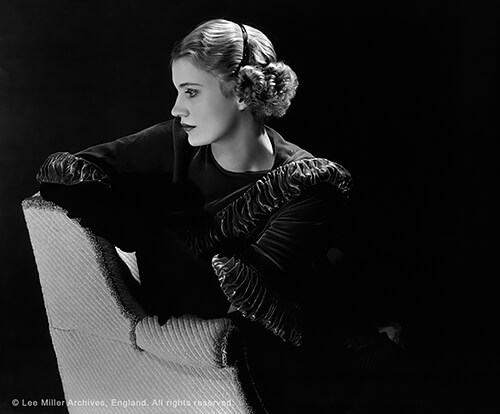Lee Miller, 1907-1977, first entered the world of photography as a model in New York to photographers such as
Edward Steichen,
Arnold Genthe and
George Hoyninguen-Huene.
In 1929 Miller moved to Paris and became the assistant, and lover, of
Man Ray. Together, they produced some of the most significant works of both of their careers, including rediscovering the solarisation technique in Man Ray’s darkroom. She quickly became established as both surrealist artist and photographer in her own right and returned to New York to run her own studio with commissions for portraits, packing shots and editorials for
Vogue magazine.
Lee Miller spent several years in the mid 1930’s living in Cairo with her Egyptian husband, Aziz Eloui Bey. Bored of life in the city, she would travel by jeep through the desert on photography exhibitions and re-imagine desert landscapes with her witty and surrealist flair.
In 1939, Lee moved to London and worked as freelance photographer for British Vogue magazine. Alongside this, her documentation of the Blitz was published in
Grim Glory, a pamphlet encouraging the US to join the war effort. Lee Miller later became one of the first ever female war correspondents accredited to the US Army and travelled with the US troops throughout Europe during 1944 and 1945. She documented the liberation of Paris, the siege at St Malo and Buchenwald and Dachau concentration camps. Perhaps most famously, she took a self-portrait sitting in Adolf Hitler’s bathtub in his Munich apartment, a statement of the end of the war.
Lee Miller mostly abandoned photography later in her life and didn’t speak of her wartime experiences. Her former and final home, Farley Farm House, Sussex, England is now the base of the Lee Miller Archives which holds over 60,000 of her negatives as well as manuscripts and vintage prints. Over 3,000 images are available to view at www.leemiller.co.uk.
